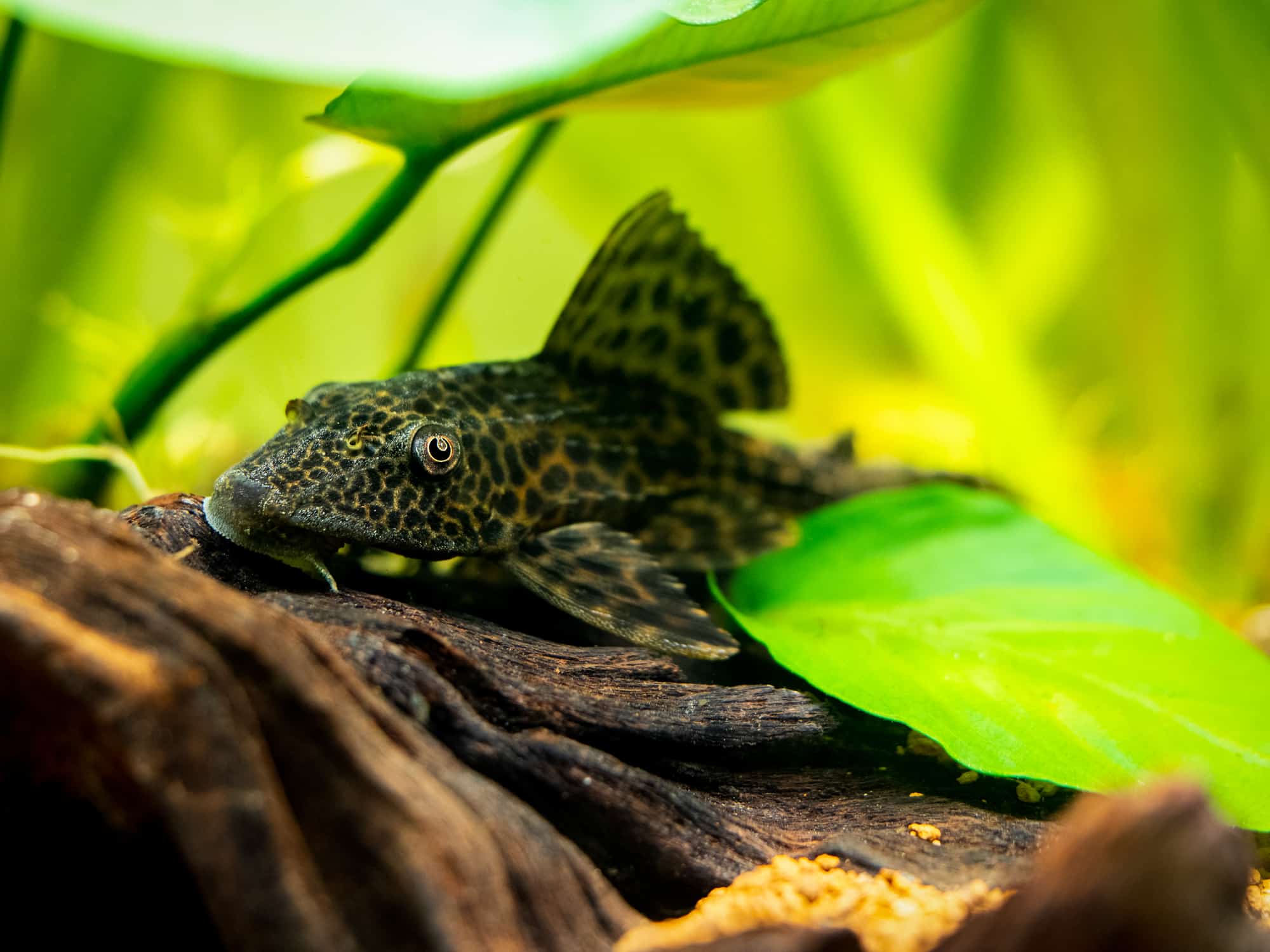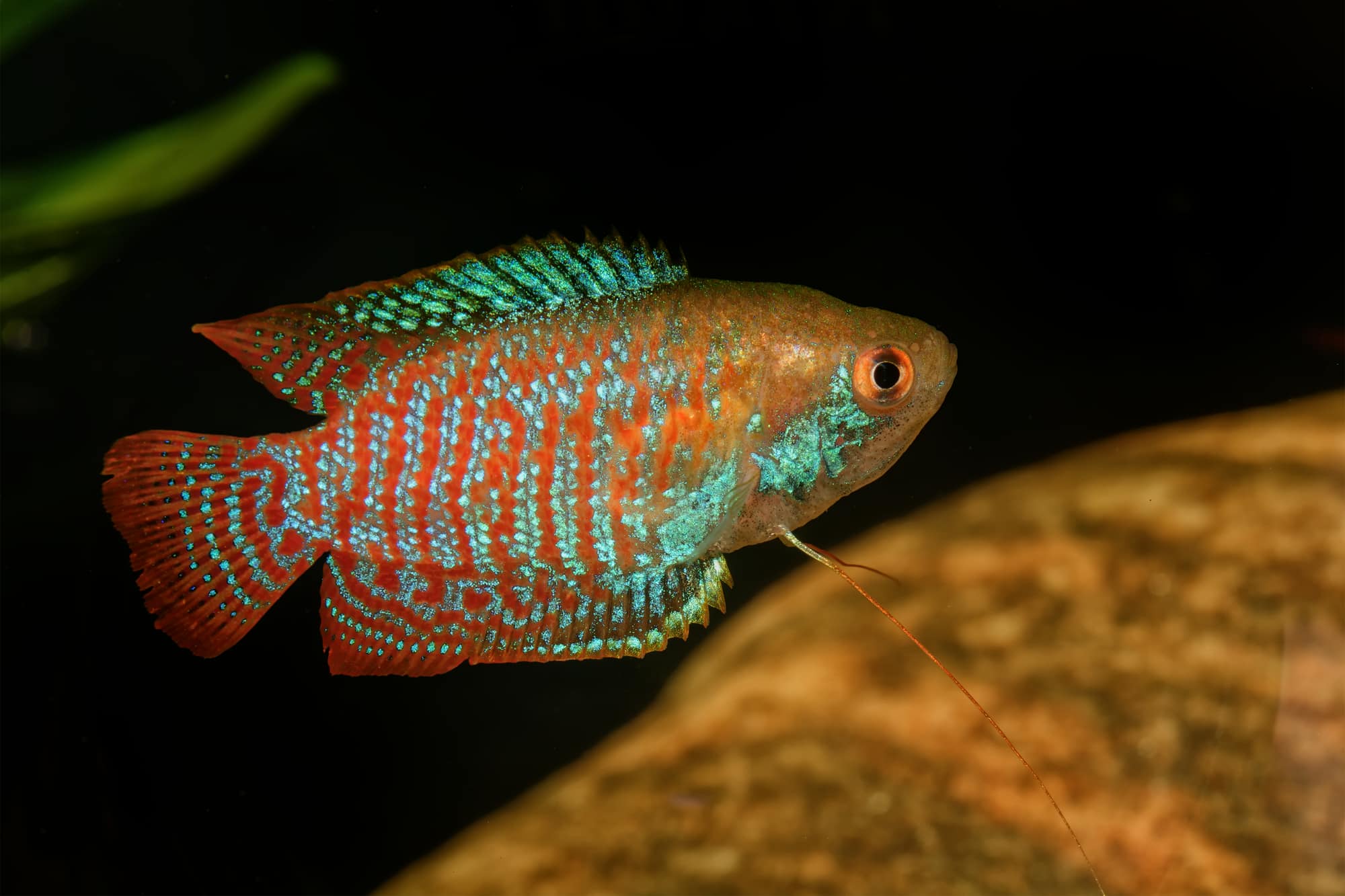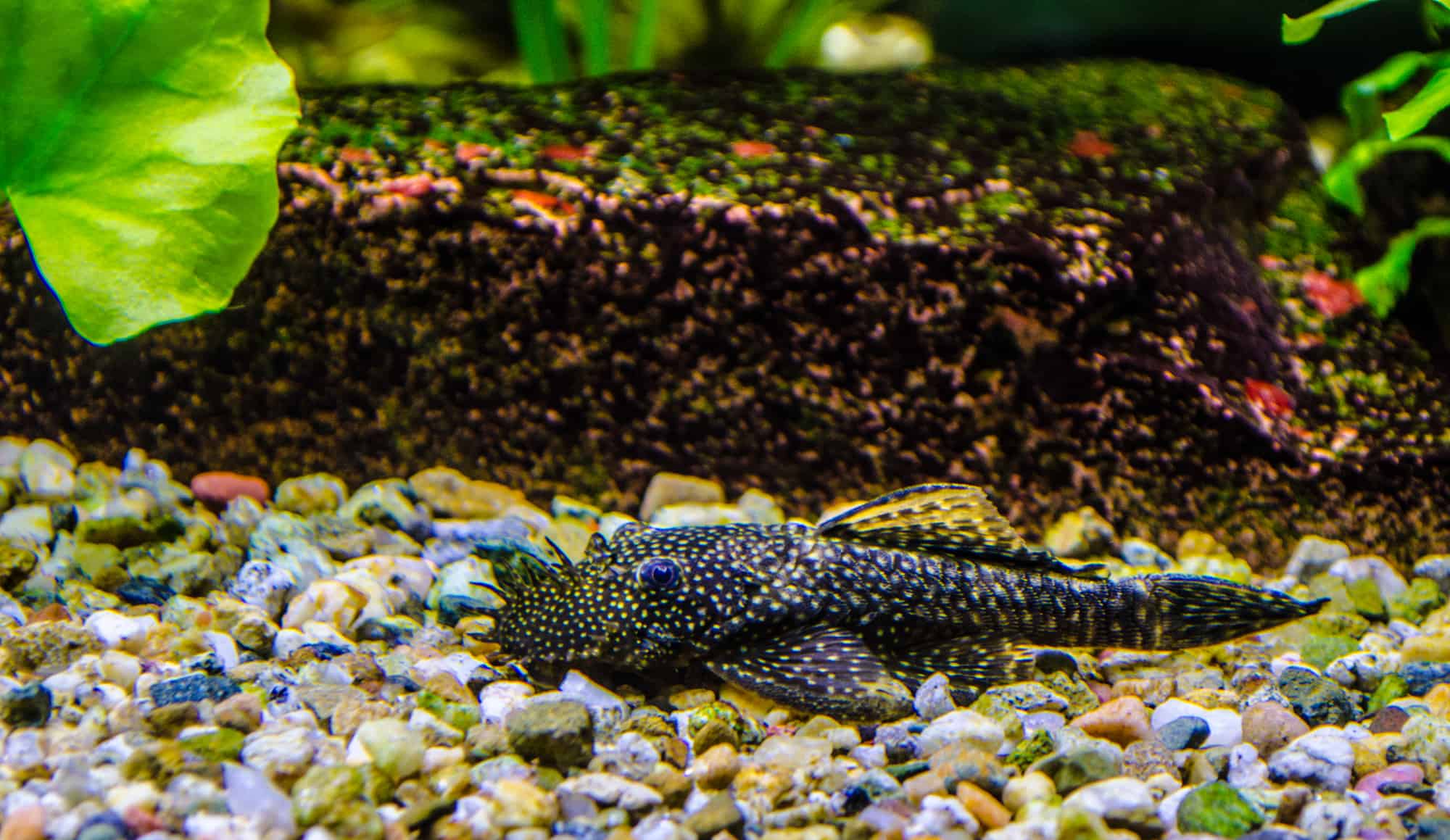If you desperately want to keep fish but don’t have much space in your home for a large aquarium, you might be wondering what species you can keep in a smaller tank. So, the good news is that there are lots of fish that can do very well in a smaller setup of up to 10 gallons.
However, newbies to the fish-keeping hobby often fall into the trap of keeping unsuitable fish in small aquariums.
Read this guide to learn what fish species you should not keep in small tanks.
Key Takeaways
- Small tanks, also known as nano tanks, can be up to 15 gallons on capacity. Despite their size, these tanks require more frequent maintenance and should not be used to house fish unsuitable for that environment.
- Certain fish species like Oscars, Common plecos, and goldfish grow large, produce a lot of waste, and have specific needs that make them inappropriate for small aquariums of up to 10 gallons.
- Responsible fish-keeping involves researching your fish’s adult size and care needs, practicing proper tank maintenance, cycling the tank before adding fish, and ensuring appropriate water parameters and diet.
How Small Is Too Small?
Small fish tanks are extremely popular with those who have apartments with limited space. These nano tanks, as they are commonly known, come in two sizes: under 5 gallons and from 5 to 15 gallons.
Now, just because the aquarium is small, don’t assume it takes less maintenance than a larger tank. These tiny tanks need more frequent maintenance to keep the water safe and clean for your aquatic pets.
Tiny bowls and vases are not suitable for keeping fish of any size since there’s no space for a filtration system, decorations, or plants. That makes for a miserable, unhealthy environment that provides no mental or physical stimulation for your fish.
Ideally, as a basic rule of thumb, you should allow one gallon of water for every inch of fish. However, factors like the fish’s temperament, behavior, territoriality, and body shape must also be taken into account.
What Fish Are Unsuitable for Small Tanks?
It’s extremely easy to accidentally overcrowd a small tank or introduce a fish species that’s unsuitable for such an environment.
For example,
- Shoaling or schooling fish species need plenty of open water swimming space to be happy; a tiny tank will not provide that.
- Territorial fish species need space to establish a territory and won’t tolerate being hassled by others encroaching on their patch. That’s tricky in a small aquarium; feeling confined often leads to aggression, stress, and disease outbreaks.
- Some fish are naturally solitary and don’t appreciate being kept in a small space with others. These fish can do fine in a community setup, but they need plenty of hiding places and thick planting where they can find privacy to feel comfortable.
Size Matters
Remember that the fish you see for sale in your local fish store and online are usually juveniles with plenty of growing to do. It’s all too easy to fall in love with one of these inch-long little cuties and take it home, only to find you’ve bought a whopping six-incher a few short months down the line!
That’s what happened to me during my early days of fishkeeping as a teenager. I carefully set up and cycled my new aquarium, filled it with plants and natural decorations, and then chose four tiny fancy goldfish of different colors. Of course, the tiddlers thrived on the high-quality diet I provided and rapidly grew. Within a few months, I had to upscale the tank to give my fishy friends more space, only to find I needed to upsize their home again a year later!
The moral of my sorry tale is that you must carefully research the species to find out how big the fish will be once fully grown.
Fish Species You Should NOT Keep in Small Tanks!
So, here are some fish species you should definitely not keep in a small fish tank.
Don’t be too disappointed; I’ve suggested some nice alternatives for you to consider instead, so the news is not all bad!
Oscars (Astronotus ocellatus)

- Origins: South America, especially the Amazon basin
- Omnivore
- Water temperature 74 to 81°F (23 to 27°C)
Oscars are large fish, growing to reach an adult size of 12 to 14 inches or more, and can be territorial and aggressive, especially towards smaller fish.
Oscars require a large tank due to their size and territorial nature. A minimum tank size of 75 gallons is recommended for a single Oscar, with additional space needed for each additional specimen.
Oscars will quickly outgrow the space in a small tank, leading to stress, stunted growth, and potential health issues.
Common Pleco (Hypostomus plecostomus)

- Origins: South America
- Omnivores, although they prefer a diet of mainly plant matter and algae
- Water temperature 72 to 86°F (22 to 30°C)
Plecos are nocturnal, spending much of their time grazing on algae or hiding in caves or crevices during the day.
These are large fish growing to a maximum size of over 1 foot in length, so they need a very spacious tank of at least 100 gallons. In addition, Common plecos need a continuous supply of algae, which will quickly become depleted in a small tank, and they need ample space to roam and explore.
As they grow, these fish produce a lot of waste, which can lead to poor water quality in smaller tanks.
Goldfish (Carassius auratus)

- Origins: Not present in the wild
- Omnivores
- Water temperature 65 to 75°F (18 to 24°C)
Goldfish are social creatures that should be kept in groups in large tanks or ponds. The largest varieties of slim-bodied goldfish, like Comets and Shubunkins, can grow up to a foot long or more, and round-bodied fancy varieties will reach between 6 and 8 inches in length when fully grown.
Goldfish are active swimmers who need plenty of space in which to socialize and explore, so a tank of at least 20 gallons is essential for just one fish. However, the larger types need a much larger tank or, ideally, a garden pond.
Goldfish are dirty creatures that produce a vast amount of waste, leading to the rapid deterioration of water quality in a tank that’s too small. In addition, keeping your goldfish in a small tank can lead to stunted growth and stress-related health problems.
Fish Species You CAN Keep in Smaller Tanks
Here are a few fish species that can do well in smaller tanks.
Dwarf Gourami (Trichogaster lalius)

These colorful, peaceful fish are native to South Asia, where they live in tropical waters around 77 to 82°F (25 to 28°C). Dwarf gouramis are omnivores, enjoying a diet of fish flakes, pellets, and small live or frozen foods.
These delightful fish will do well in a minimum tank size of 10 gallons.
Bristlenose Pleco (Ancistrus cirrhosus)

Bristlenose plecos are weird-looking, bottom-dwelling fish that come from South America. As these cute fish grow to around 4 to 6 inches long, they can do well in a smaller tank, although 30 gallons is the minimum size recommended.
Otocinclus Catfish (Otocinclus affinis)

Otos come from South America and make excellent algae eaters, doing well in tanks as small as 10 gallons. These peaceful fish prefer cooler water temperatures around 72 to 78°F (22 to 26°C) and do well on a varied diet of algae wafers and blanched vegetables.
White Cloud Mountain Minnows (Tanichthys albonubes)

These small, peaceful fish are native to China, where they thrive in the cooler water temperatures of fast-flowing hill streams. These pretty little fish can live in groups in a small tank of around 10 gallons.
Rosy Barb (Pethia conchonius)

Rosy barbs are colorful, active fish that come from South Asia and need tropical water temperatures of around 72 to 78°F (22 to 26°C). You can keep these charming, omnivorous fish in tanks as small as 20 gallons.
Betta Fish (Betta splendens)

Betta fish or Siamese Fighting fish can live in a small tank alone or with a few peaceful invertebrates. These beautiful, tropical fish are notoriously aggressive toward their own kind and species of fish with bright colors and flowing finnage, so they don’t make ideal community tank candidates.
Responsible Fish-Keeping Practices for Beginners
- Before buying a fish, take the time to research their specific care requirements, including tank size, water parameters, diet, and compatibility with other species.
- Allow your tank to cycle properly before adding any fish. That allows colonies of beneficial bacteria to become established in the filter media and substrate to help maintain water quality.
- Maintain your aquarium properly by performing routine water changes, filter cleaning, and gravel vacuuming to maintain optimal water quality and a safe environment for your aquatic pets.
- Regularly test water parameters such as ammonia, nitrite, nitrate, pH, and temperature to be sure they are stable and within appropriate ranges for your fish.
- Do not overstock your tank! Follow recommendations for stocking levels to prevent stress, aggression, and poor water quality.
- Offer your fish a varied diet that meets the nutritional needs of all your fish. Avoid overfeeding, as uneaten food will decompose in the substrate, contributing to water pollution.
- Quarantine new fish for at least two weeks before adding them to your main tank to prevent the introduction of diseases and parasites.
- Stay up-to-date with proper fish care practices and seek advice from experienced aquarists or reputable sources, like our website, when needed.
Final Thoughts
If you live in an apartment or a small house and you want to keep an aquarium, you might be tempted to invest in a nano tank of up to 15 gallons. That’s a great idea, provided you choose the right fish size for that tank.
Most fish you see for sale online and in high street fish stores are juveniles that will grow quite quickly, potentially getting too big for a small tank. So, when buying fish for any tank size, carefully research the species.
Ideally, you want to keep small, peaceful fish that share similar water parameter preferences. Avoid territorial species and those that are solitary in nature.


